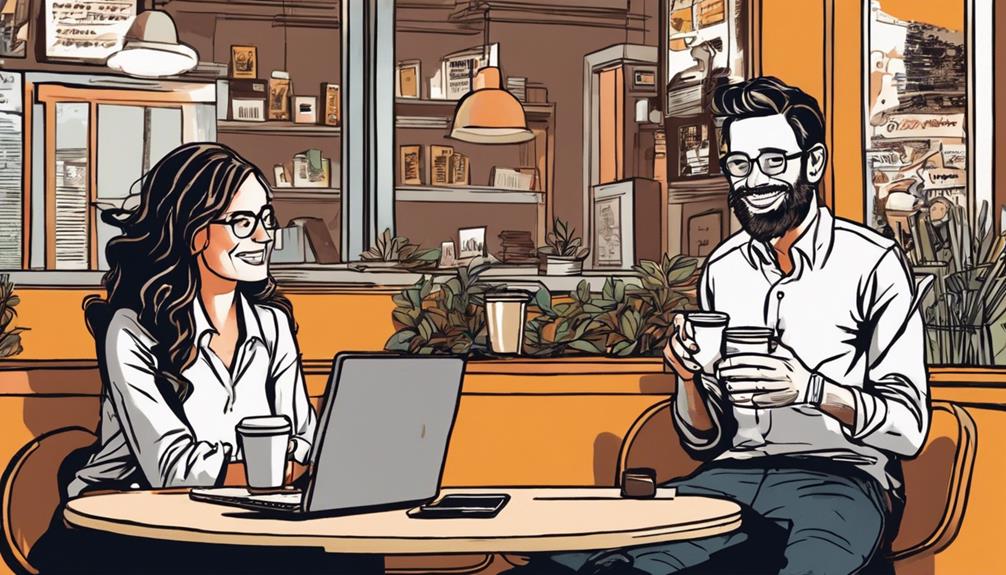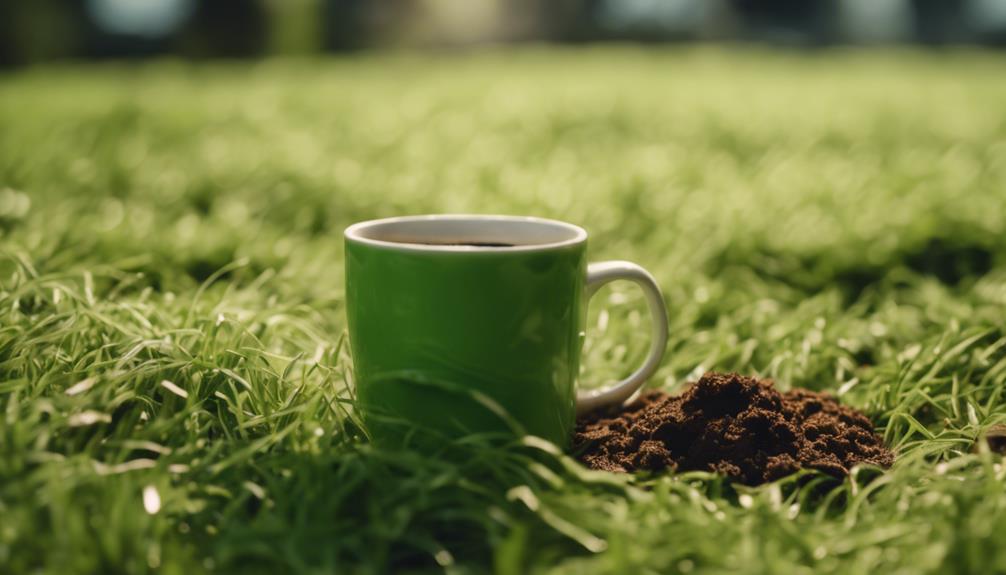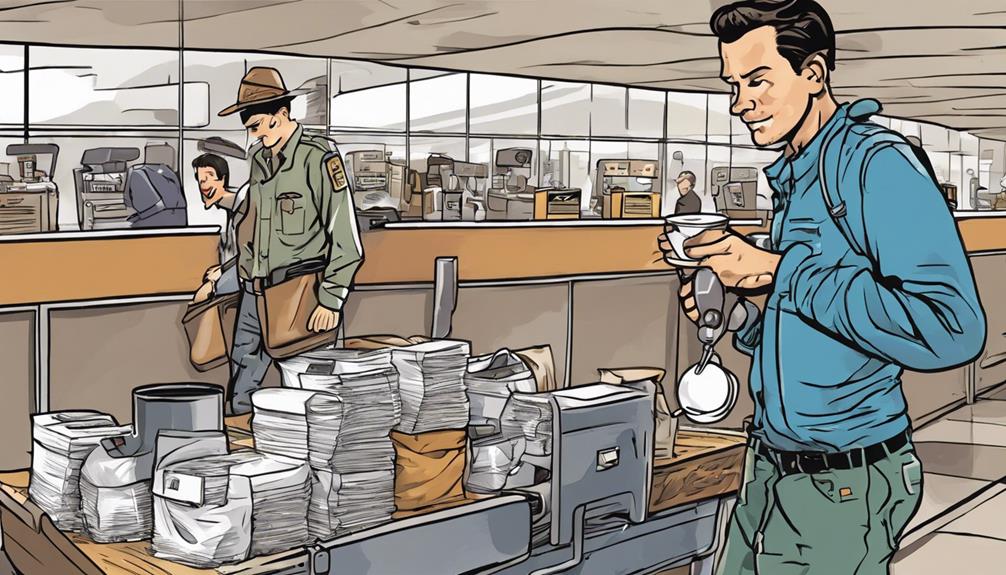To achieve stunning latte art on your coffee, begin by perfecting milk steaming and precise pouring techniques. Concentrate on the stages of pouring and the specific hand movements required for creating designs. Utilize methods such as cup tilting and a gentle wiggling motion to craft intricate patterns. Develop your muscle memory to enhance your pouring skills. Focus on maintaining consistency, symmetry, and contrast to achieve the desired final outcome. Continually practice and hone your abilities to elevate the visual appeal of your latte art. Enhance your latte art by honing muscle memory and mastering precise pouring. Prepare to enhance both flavor and aesthetics with your latte masterpieces!
Key Takeaways
- Master milk steaming for smooth texture.
- Practice pouring phases and hand movements.
- Develop muscle memory for precise pours.
- Focus on contrast, symmetry, and consistency.
- Enhance visual appeal with glossy finish.
Importance of Milk Steaming
To create captivating latte art, mastering the technique of milk steaming is vital. Steamed milk plays a pivotal role in the overall appearance and quality of your latte art designs.
The first step in achieving perfectly steamed milk is to make sure that it has a velvety texture without any large bubbles. These bubbles can disrupt the pouring process and affect the final look of your design. Steaming the milk creates a stable surface in the cup, allowing you to execute intricate designs with precision.
The contrast between the steamed milk and espresso is also heightened when the milk is properly textured, resulting in visually appealing latte art. Remember, steamed milk behaves differently than unsteamed milk, so mastering the art of milk steaming is essential to achieving the desired look and feel in your latte art creations.
Pouring Phases Overview

Mastering the pouring stages is pivotal to bringing your latte art designs to life. When creating latte art, the pouring process consists of two main phases. To start, mixing the milk with espresso forms a stable base for your design.
To guarantee precision in your art, specific hand movements are essential in the second phase. Techniques such as tilting the cup and pouring along the vertical axis help in achieving the desired outcome.
Before pouring, swirling the milk and espresso mixture aids in creating contrast within your design. Remember to tilt the cup at a specific angle during pouring to add depth and dimension to your artwork.
Maintaining a controlled and steady pour, combined with a subtle wiggling motion, is vital for crafting intricate and detailed latte art designs. By mastering these pouring stages, you'll be on your way to creating stunning and visually appealing latte art on your coffee.
Design Execution Techniques
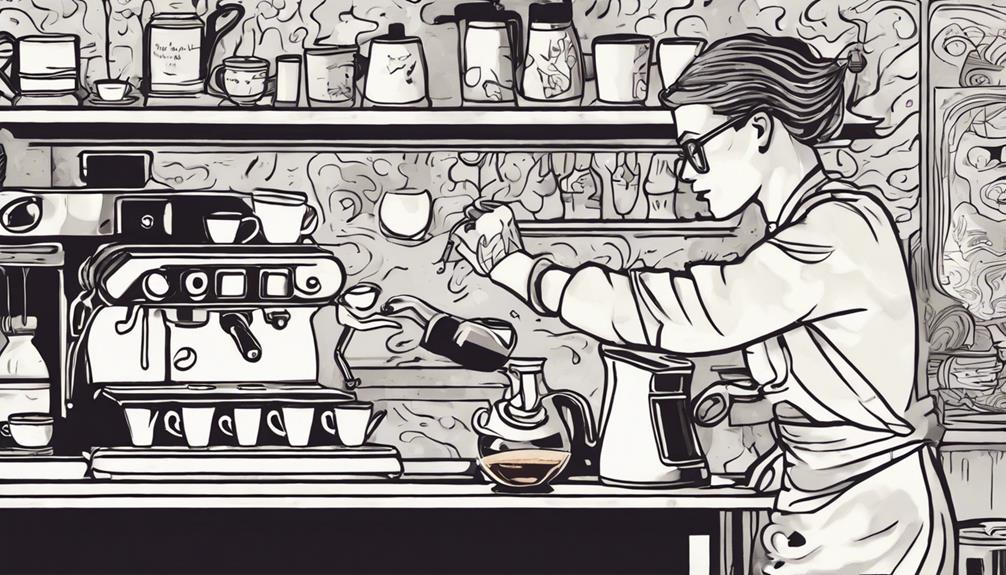
For best depth and control in your latte art creations, tilt the cup at a 45-degree angle while executing your design.
To enhance your design execution techniques, consider the following:
- Firmly hold the pitcher to maintain control over the flow of milk and create intricate designs.
- Use a wiggling motion to manipulate the milk stream and form detailed patterns in the latte art.
- Maintain a thin, steady stream of milk to guarantee precision and consistency in the design execution.
- Cut through the design at the right height to finish with a polished and visually appealing latte art creation.
Tips for Training Latte Art
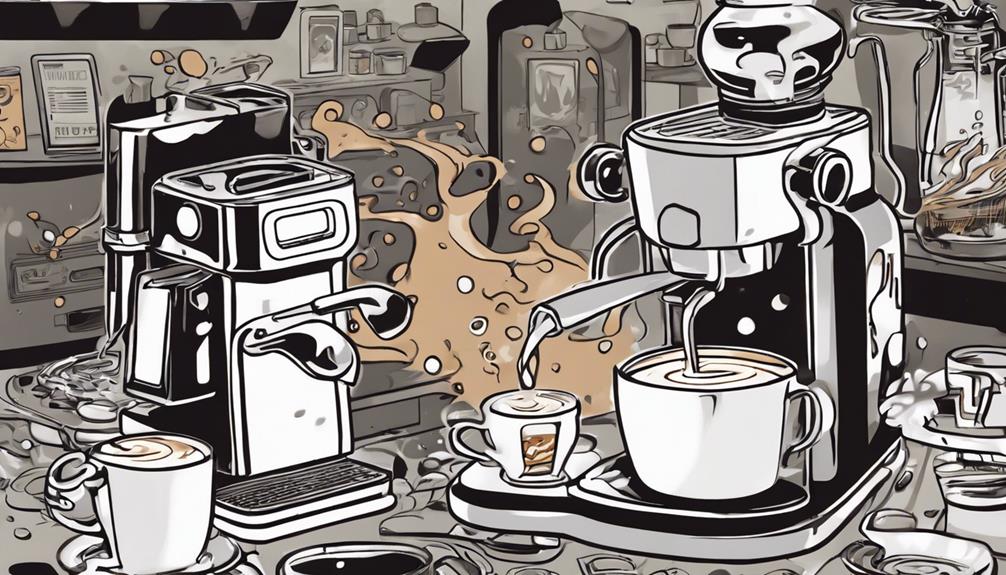
Consider incorporating cold water and detergent into your training routine for latte art to conserve milk and minimize waste. This practice allows you to refine your skills without using up excess milk.
Additionally, using diluted cacao powder can be a cost-effective alternative for honing your latte art designs. Focus on building muscle memory and perfecting your hand movements to enhance your pouring technique.
Practicing slowly and deliberately will help you improve the precision of your latte art creations over time. If you find it challenging to create a stable base for pouring, don't hesitate to use a spoon for mixing.
Final Result Characteristics
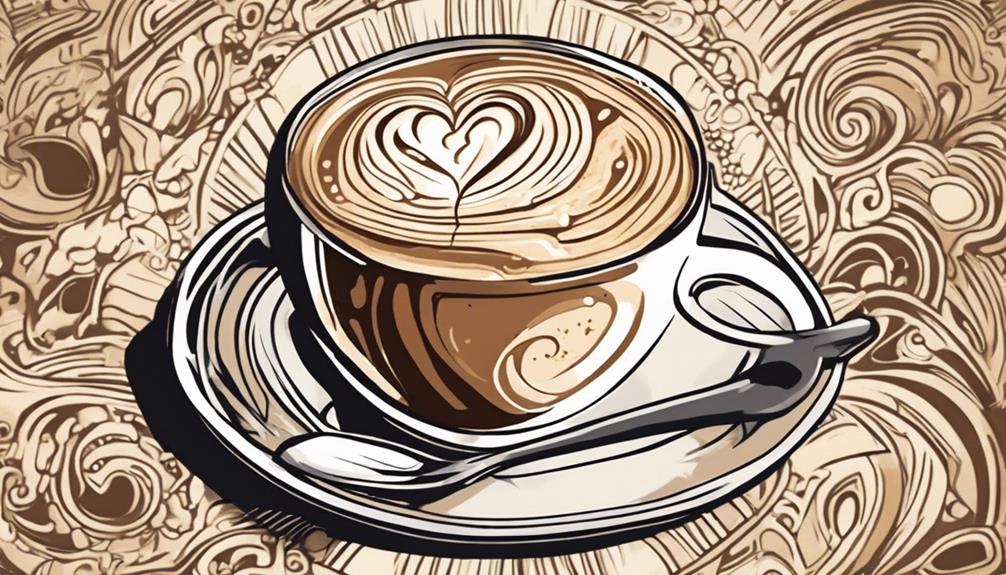
To attain visually stunning latte art, make certain that your design exhibits a unified texture and symmetrical appearance. When creating latte art, aspire for a final result that isn't only visually appealing but also reflects the care and precision put into it. Here are some characteristics to aim for in your latte art creations:
- Guarantee the design has a consistent and smooth texture throughout.
- Strive for symmetry in your design, creating a balanced and harmonious look.
- A glossy surface that reflects light can enhance the overall appearance of your latte art.
- High contrast between the milk and espresso will make your design pop.
- Be attentive to any visible bubbles in the design, as they can detract from the final look.
Steamed Milk: Key Element
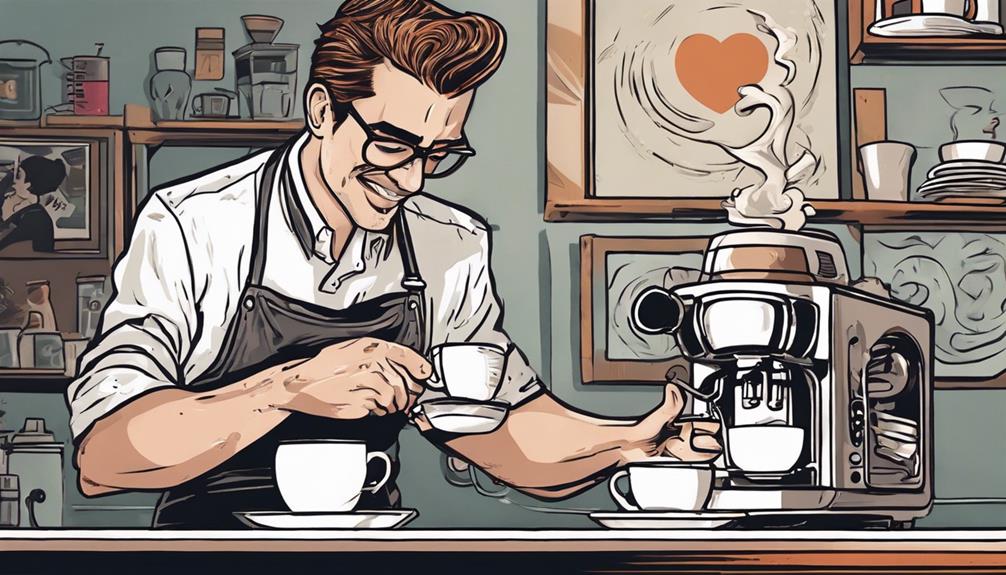
Achieving elaborate latte art designs hinges on mastering the steaming of milk, a vital element in creating visually enchanting patterns on your coffee. The key to achieving the perfect microfoam for latte art lies in properly steaming the milk to create a smooth and velvety texture. This process involves carefully heating and texturing the milk, creating the ideal foundation for creating intricate designs. If you want to learn how to create coffee art, mastering the art of steaming milk is an essential first step. With the right techniques and practice, you can elevate your coffee experience and impress your friends and customers with stunning latte art designs.
Perfectly steamed milk is essential as large bubbles can disrupt the pouring process and affect the final design.
Steamed milk acts as a stable canvas for creating contrast and depth in latte art, enhancing the overall aesthetic appeal.
The texture of the steamed milk plays a significant role in the visual outcome of your latte art, adding dimension and finesse to your creations.
Understanding how steamed milk behaves compared to unsteamed milk is necessary for successful latte art, as it allows you to control the flow and complexity of your designs.
Hand Movements in Pouring
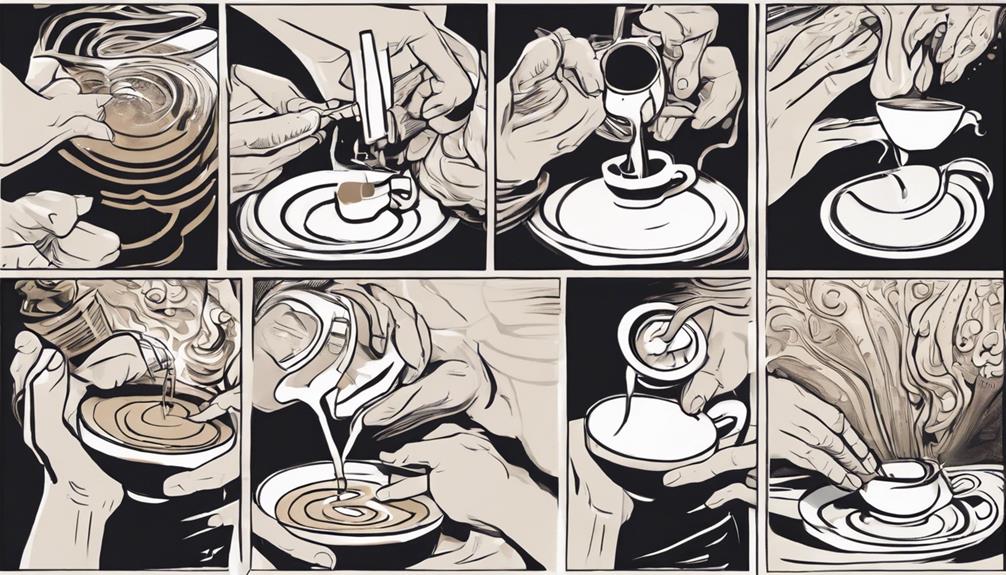
Mastering hand movements in pouring is crucial for creating intricate and engaging latte art designs. To achieve stunning results, remember the following key techniques:
- Tilt the Cup: Start by tilting the cup at a 45-degree angle to help create depth in your design.
- Controlled Movements: Make sure your hand movements are precise and controlled when pouring the milk onto the espresso.
- Wiggling Motion: Incorporate a gentle wiggling motion while pouring to assist in forming intricate patterns within your artwork.
- Steady Stream: Maintain a thin, steady stream of milk to guarantee accuracy in your design and prevent any unintended splatters.
- Cutting Through: To add the final touch to your masterpiece, remember to cut through the design at the right height, creating a clean finish to your latte art creation.
Creating Depth in Designs
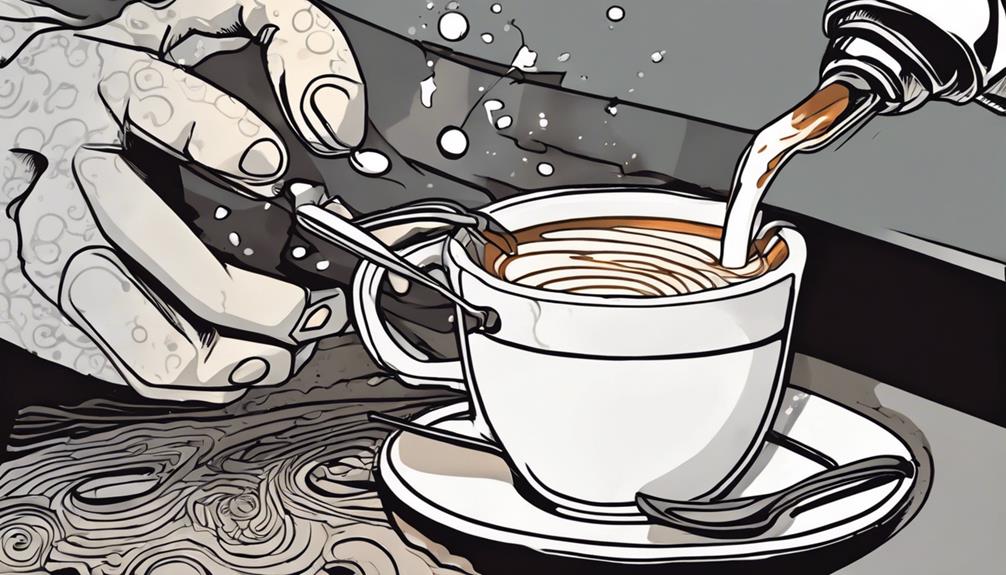
Tilt your cup at a 45-degree angle to add depth to your latte art designs.
Adjust the height of your pour to create layers and dimension in your artwork.
Use a wiggling motion while pouring for intricate details and added depth.
Angle for Depth
To enhance the visual charm of your latte art designs, consider adjusting the angle of your cup for creating depth in your artwork. Tilt the cup at a 45-degree angle to allow different layers of milk and espresso to be visible in the design.
Angling the cup not only helps in controlling the flow of milk but also contributes to creating a three-dimensional effect. Furthermore, the angle of the cup plays a significant role in determining the placement of the design on the surface of the coffee.
Experimenting with various angles can lead to the development of unique and visually appealing latte art creations.
- Tilt the cup at a 45-degree angle for enhanced depth.
- Different layers of milk and espresso become visible with the angled cup.
- Control milk flow and achieve a three-dimensional effect by angling the cup.
- The cup's angle influences where the design appears on the coffee's surface.
- Experiment with varied angles to create distinctive and enchanting latte art designs.
Controlled Pouring Technique
Enhancing the depth of your latte art designs involves mastering a controlled pouring technique. By tilting the cup at a specific angle, you can create layers of milk and espresso, adding dimension to your artwork.
To maintain consistency and precision in your design, practice controlled pouring along the vertical axis. Swirl the milk and espresso mixture as you pour to enhance contrast and depth in your creation.
Incorporate a wiggling motion with the pitcher to craft intricate details and shapes within your design. Remember to keep a thin, steady stream of milk flowing during pouring to guarantee a smooth and controlled execution of your art.
With practice and attention to these techniques, you can elevate the visual appeal of your latte art by adding depth and complexity to your designs.
Muscle Memory Development
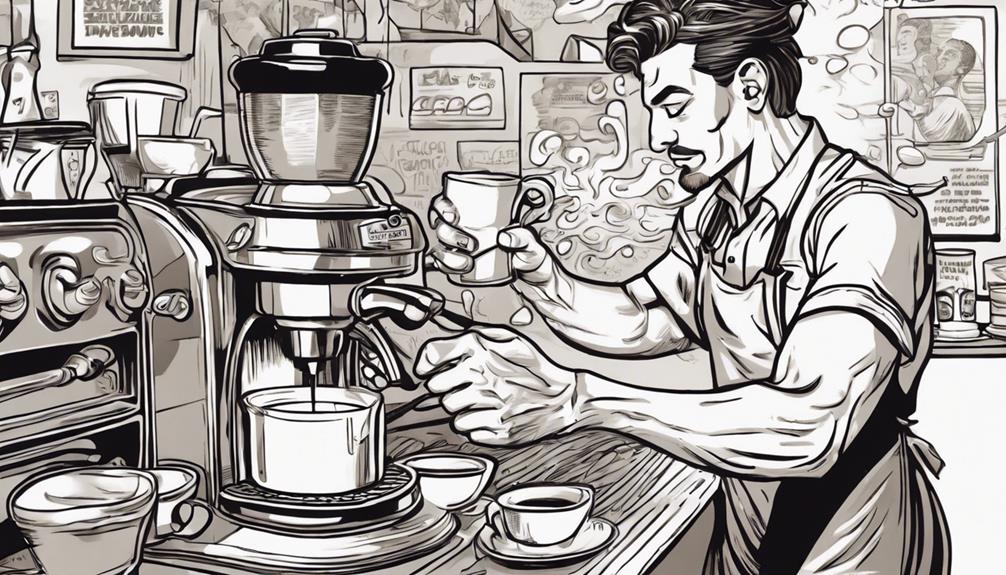
Developing muscle memory is essential for consistently pouring intricate latte art designs. Repetition is your best friend in this journey, as it helps train your muscles to remember the precise movements required for different patterns.
Consistent practice is the key to building muscle memory, enabling you to have precise control over the pouring process. As your muscle memory develops, you'll notice your pours becoming smoother and more controlled, resulting in better execution of your design ideas.
Over time, this muscle memory will allow you to pour latte art effortlessly and with greater accuracy.
- Repetition trains your muscles for intricate movements.
- Consistent practice builds precise control.
- Muscle memory leads to smoother, more controlled pours.
- Better design execution with developed muscle memory.
- Effortless and accurate latte art pouring over time.
Achieving Taste and Visual Appeal

To achieve both taste and visual appeal in your latte art, focus on creating a design with high contrast between the milk and espresso.
Smooth and shiny textures indicate a well-poured design, while visible bubbles should be avoided for a professional look.
Visual Appeal Techniques
Achieving a visually appealing latte art design involves creating a symmetric pattern with a shiny surface. To enhance the visual appeal of your latte art, consider the following techniques:
- Contrast is Key: The stark contrast between the creamy milk and rich espresso is essential for creating visually striking latte art.
- Unified Texture: A well-poured latte art heart should boast a smooth and unified texture without any visible bubbles, adding to its aesthetic appeal.
- Attention to Detail: Paying close attention to the details while pouring your latte art guarantees a polished and visually pleasing final result.
- Precision Pouring: Mastering the art of pouring the milk into the espresso with precision is essential for achieving intricate and attractive designs.
- Shine Bright: A glossy and shiny surface on your latte art can elevate its visual appeal, making it look even more enticing and professional.
Taste Enhancement Tips
For a truly satisfying experience with your latte art, focusing on taste enhancement is key alongside the visual appeal techniques previously discussed.
Achieving the perfect texture in steamed milk is vital as it enhances the overall taste of the latte art design. The proper contrast between the milk and espresso not only contributes to visual appeal but also plays a significant role in taste satisfaction.
A shiny surface on the design indicates a well-prepared latte art with a delicious taste, making it even more enjoyable. Additionally, ensuring a unified texture in the latte art design not only looks appealing but also promises a harmonious flavor experience.
Contrast and Texture
Creating latte art that excels in both taste and visual appeal relies heavily on achieving a perfect balance of contrast and texture between the milk and espresso.
To achieve this balance effectively, consider the following:
- High contrast between the white milk and dark espresso enhances the visual appeal of the latte art, making the design pop.
- The texture of perfectly steamed milk creates a smooth and creamy canvas for intricate designs to stand out, adding a luxurious feel to your coffee.
- A well-executed pour results in a balanced combination of taste and visual aesthetics in latte art, ensuring a harmonious experience.
- Proper contrast and texture in latte art are achieved through precise steaming and pouring techniques, requiring attention to detail.
The visual appeal of latte art is enhanced by the smooth texture of the milk and the contrast between the design and the coffee base, elevating both the taste and appearance of your beverage.
Achieving the perfect contrast and texture can take your latte art to the next level, delighting both your eyes and taste buds.
Frequently Asked Questions
Can You Make Latte Art With Coffee?
Yes, you can make latte art with coffee. The contrast between espresso and steamed milk is essential for intricate designs. Mastering pouring techniques and hand movements, along with practice, will help you create beautiful art on your coffee!
What Is the Secret to Latte Art?
The secret to latte art lies in perfectly steamed milk, creating a stable surface for designs and enhancing contrast. Steamed milk behaves differently, essential for smooth designs. Tilt the cup, hold the pitcher securely, and wiggle for intricate designs.
How to Make Latte Art in Coffee Talk?
To make latte art in coffee talk, start by mastering milk steaming and pouring phases. Focus on specific hand movements, cup tilting, and controlled pouring. Practice with cold water, cacao powder, and build muscle memory for improved technique.
How to Make Design on Coffee?
To make a design on coffee, tilt your cup, pour steamed milk in a thin stream, wiggle as you pour for shapes, and finish with a precise cut. Guarantee no bubbles for a professional look.
Conclusion
Now that you've mastered the basics of latte art, it's time to get creative and experiment with different designs.
Remember, practice makes perfect, so keep honing your skills and don't be afraid to try new techniques.
With dedication and patience, you'll soon be impressing your friends and customers with beautiful and delicious latte art creations.
So go ahead, let your creativity flow and pour your heart into every cup!


